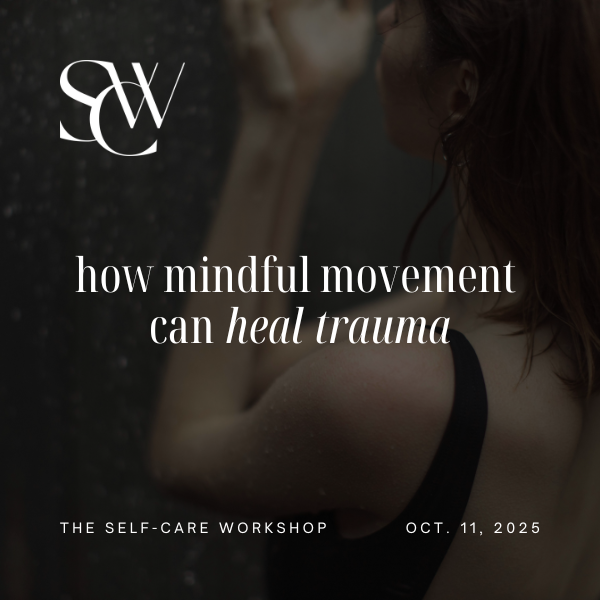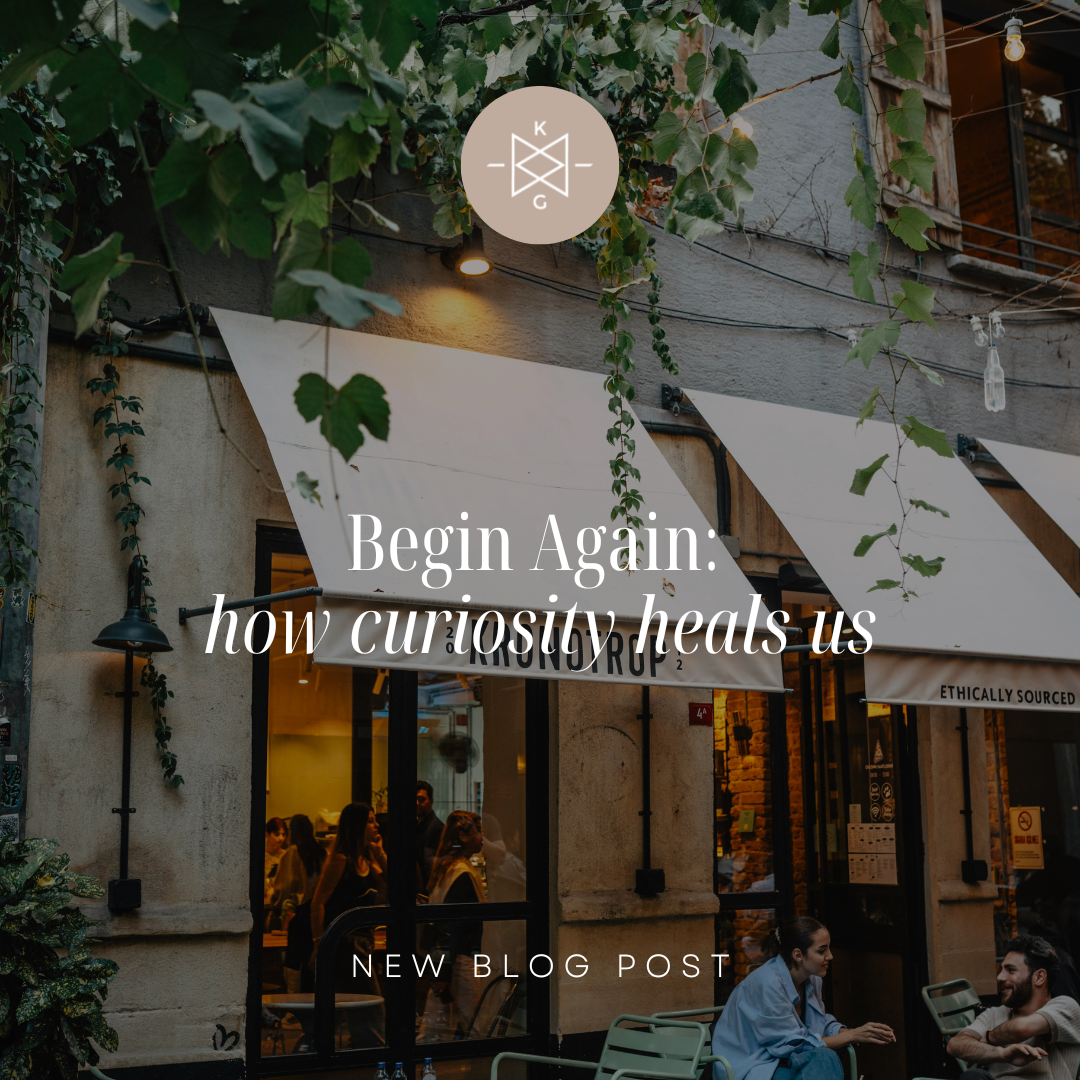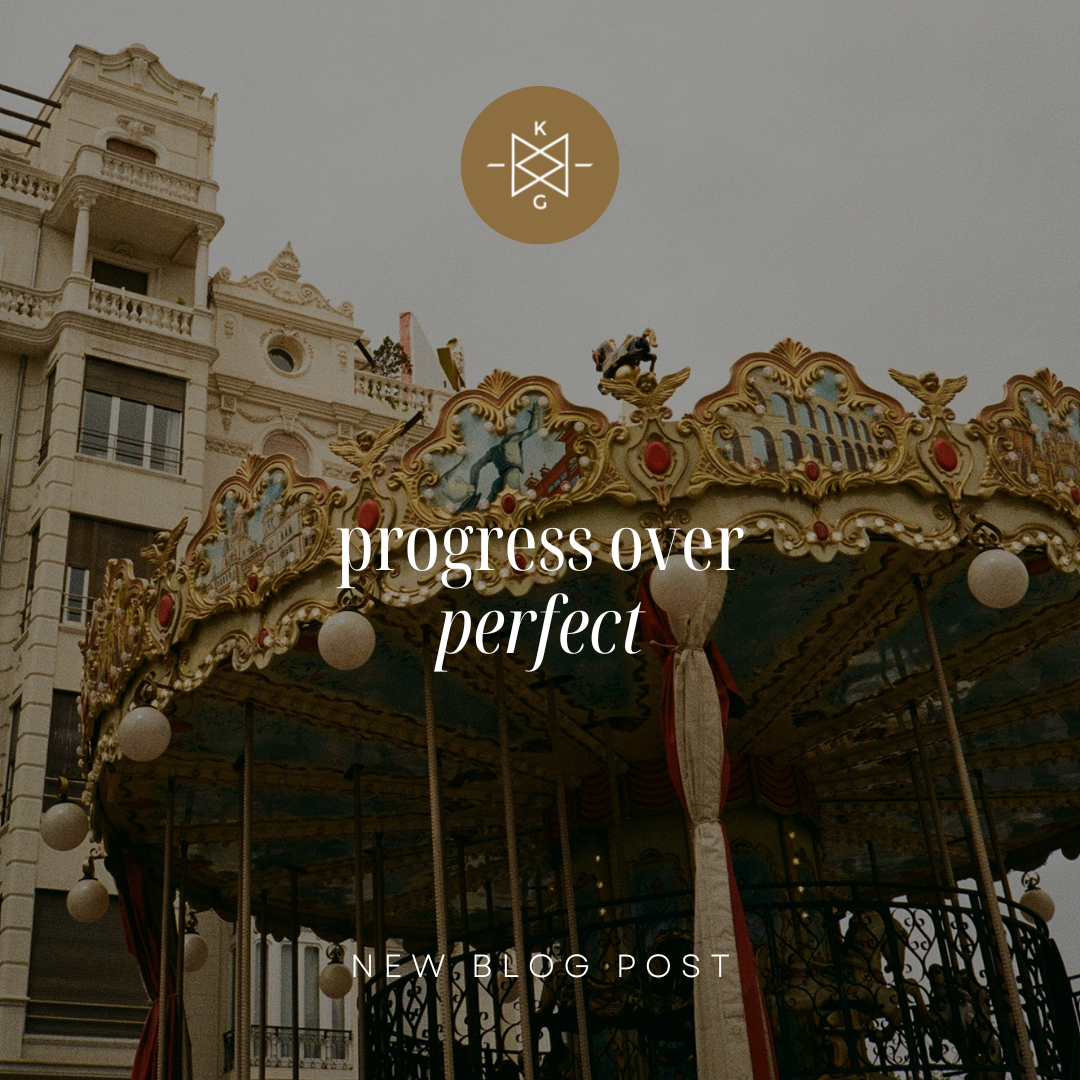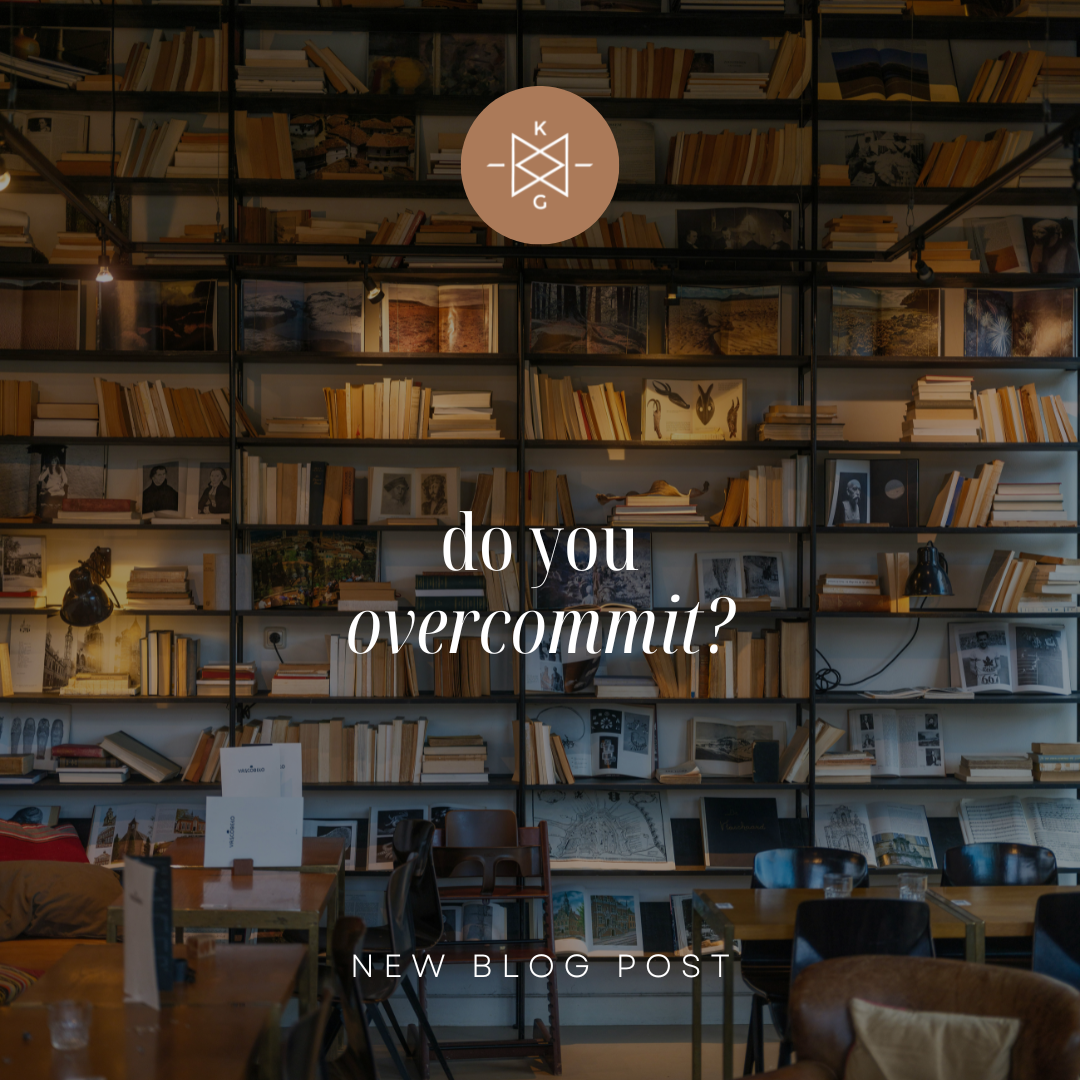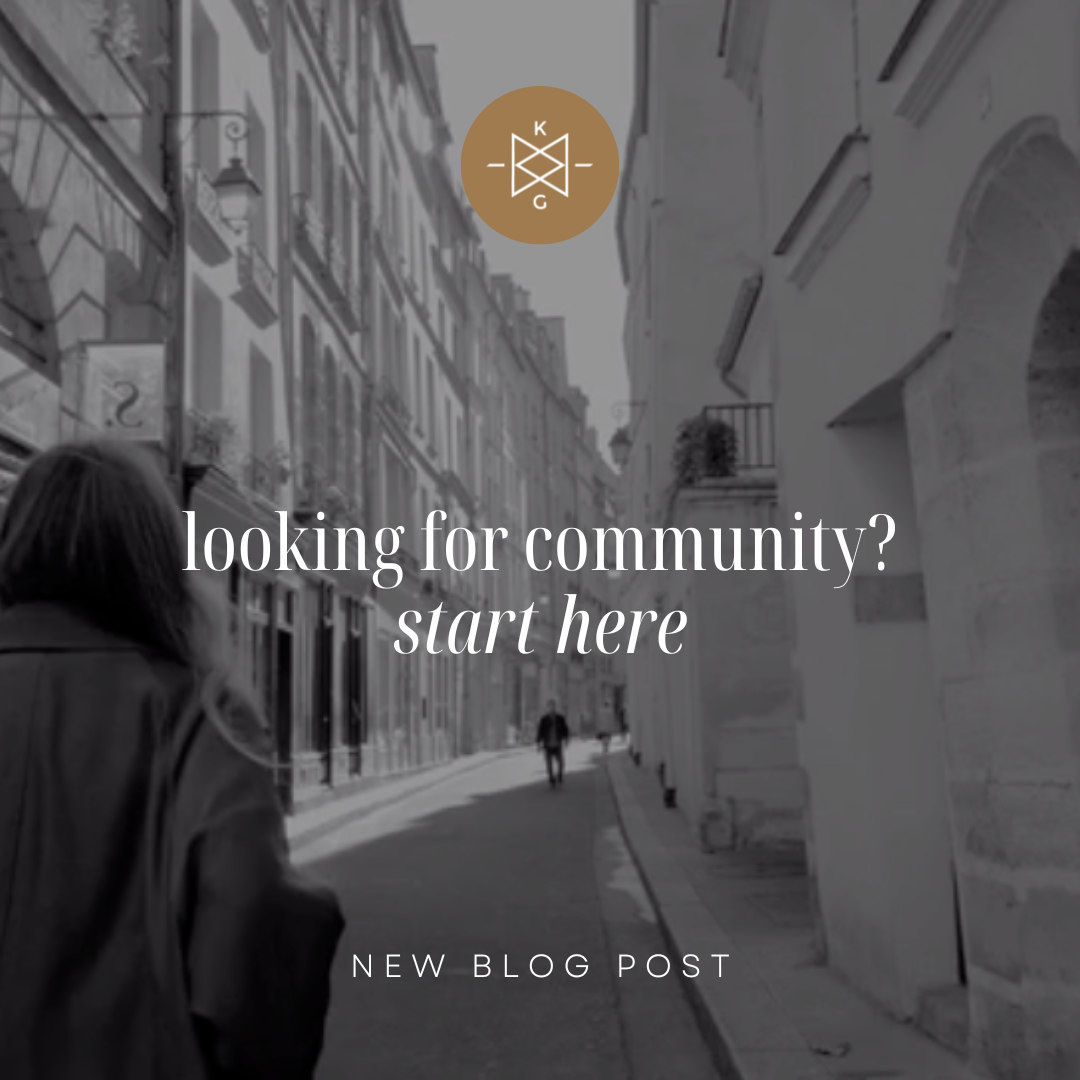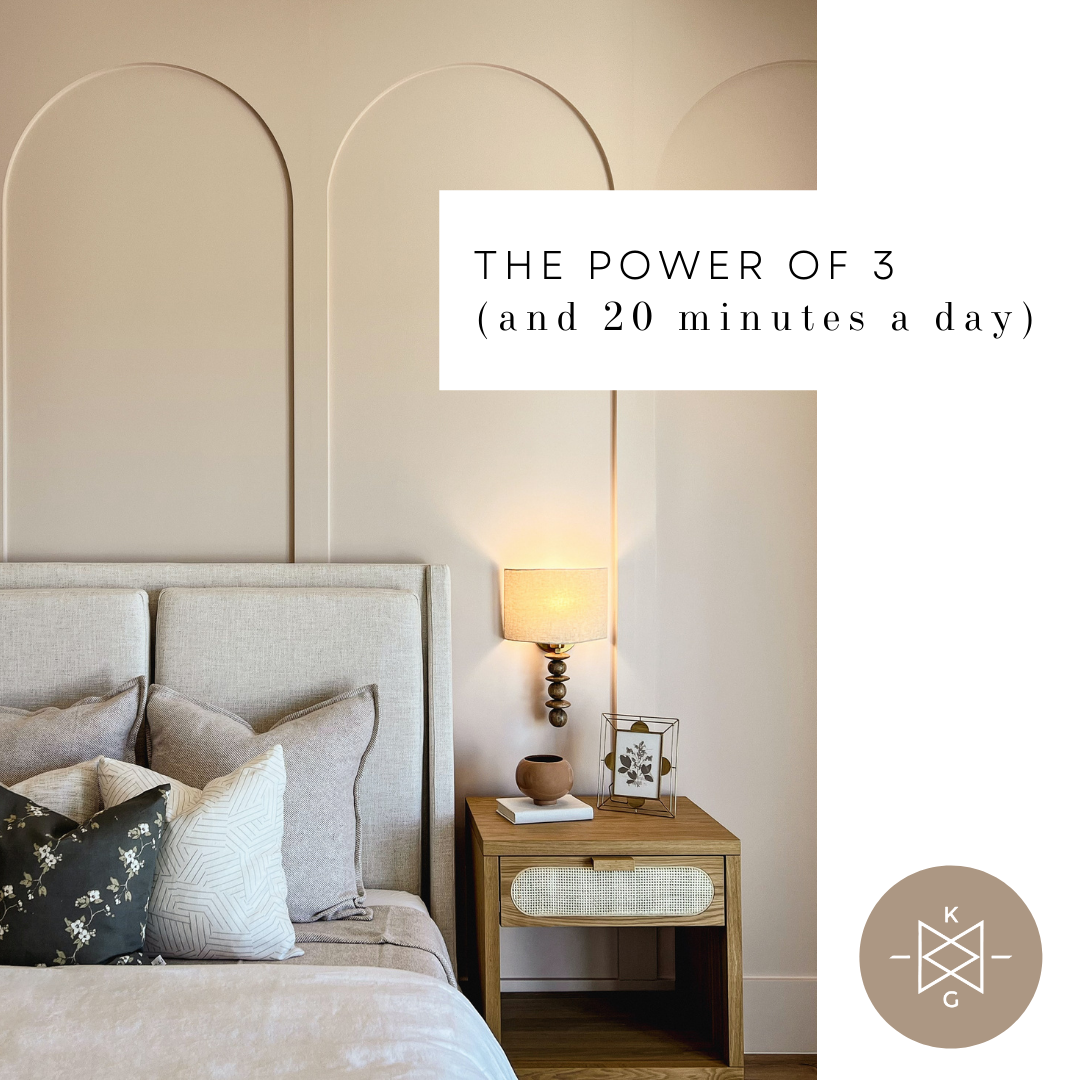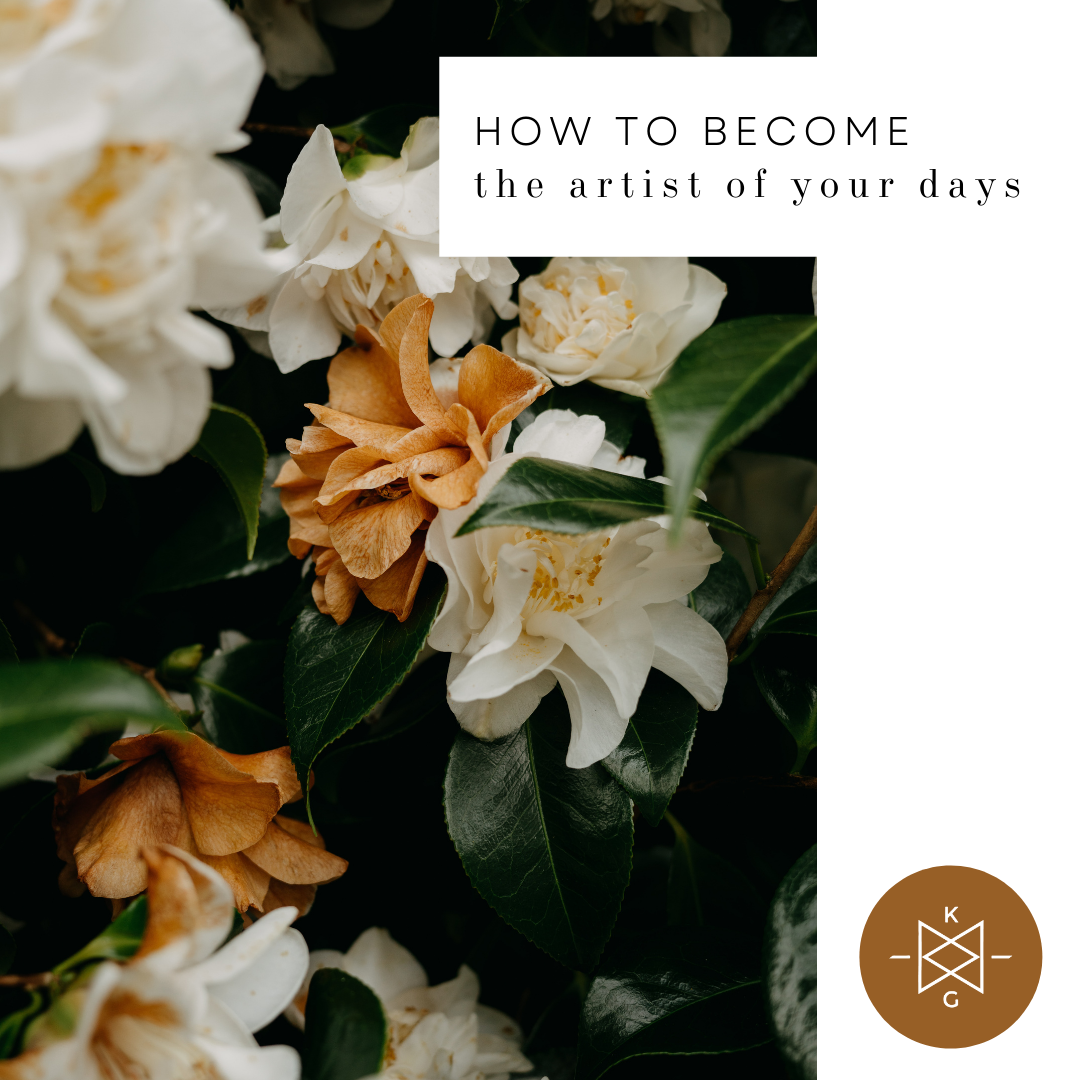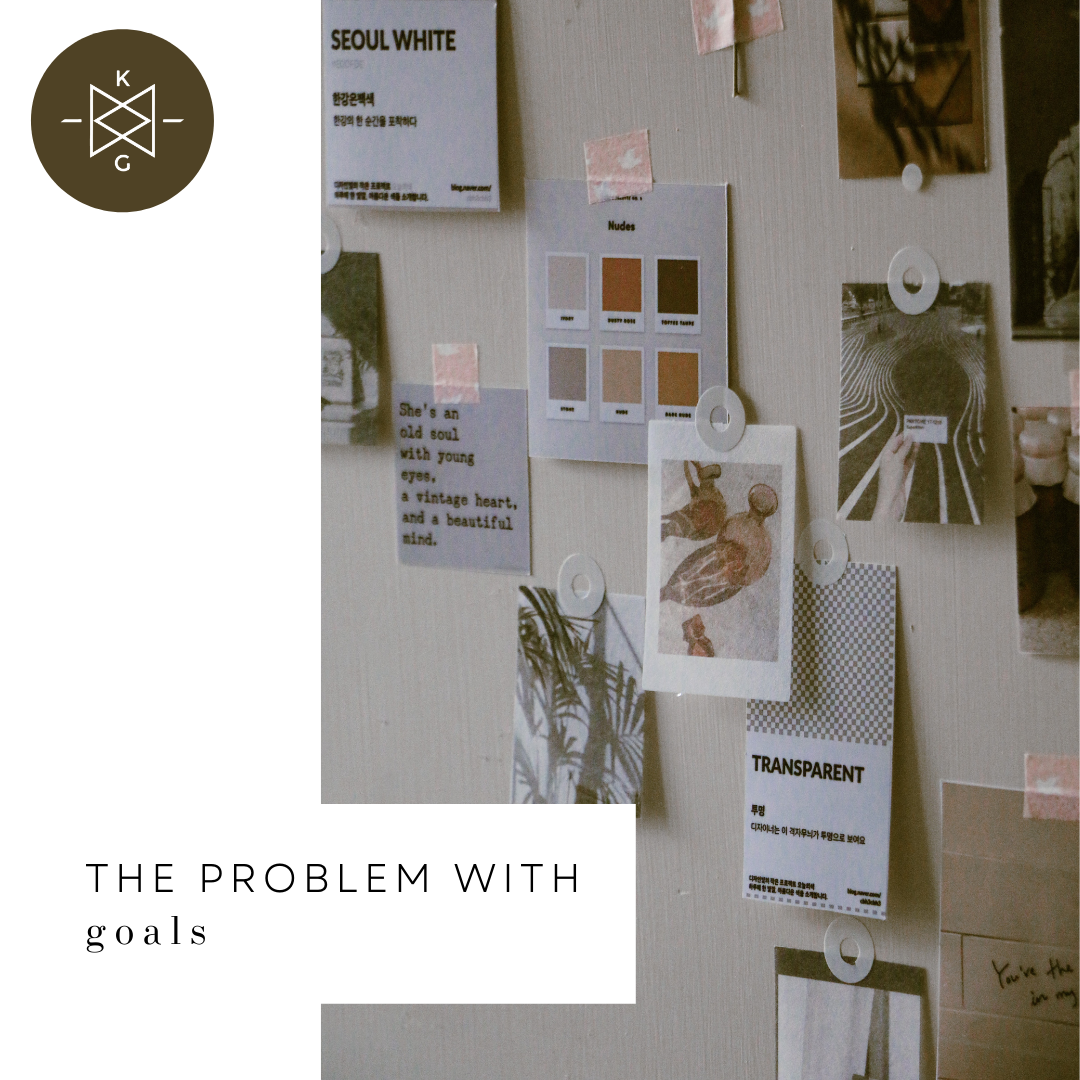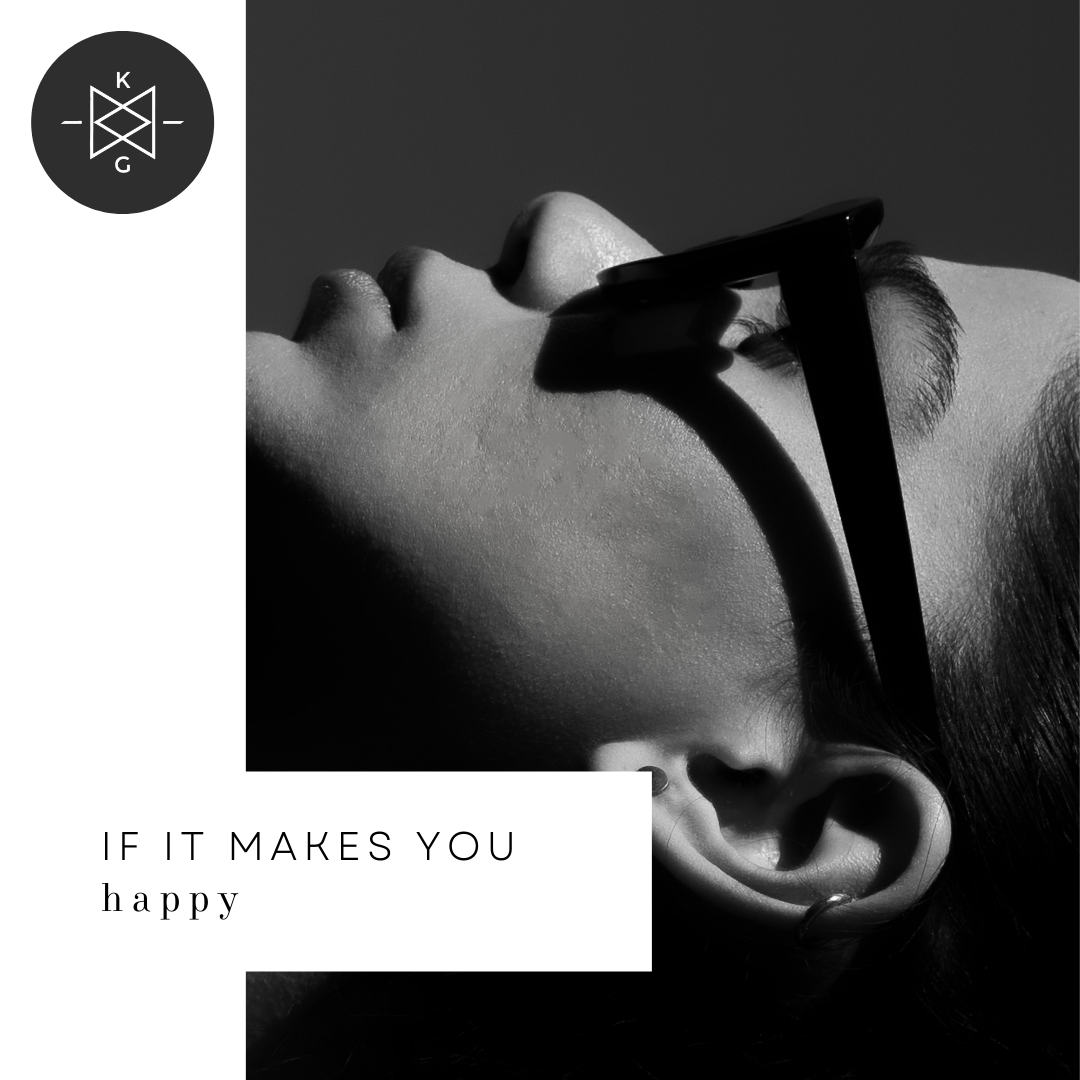
The Blog
Recently Featured
All Blogs
The Power of Three (and 20 minutes a day)
“Rituals are the formulas by which harmony is restored.”
- Terry Tempest Williams
We’ve already blown right through the first quarter of 2022! Yowza.
How are you?
It’s such a simple question and yet one we must often pause to ponder…and answer.
For me, this pocket of time typically has one of two outcomes: I’ve lost sight of the hot flame that burned bright at the dawn of the new year, meaning, I’ve blown my resolutions altogether. Or, I have filled my time up with loads of distractions—busyness—that masquerade as purpose and real progress.
If you resonate, I’ve got good news: there is another way.
We need a plan. But not just any plan. One that connects us to the truest, most authentic parts of us. One that is built on love and self-compassion, not fear and scarcity.
It’s not just a to-do list and it’s not about striving. It’s a practice that supports true self-acceptance and teaches us how to be with ourselves in order to show up for ourselves.
It’s three-fold.
Here are the three pillars of what I believe are your fool-proof self-care regimen and will help you get unstuck and stay grounded in 2022:
What about self-compassion? I’ve learned first hand we simply can’t thrive if we’re constantly working against ourselves. Shame-based striving won’t cut it because we’ll constantly be hustling for our worthiness as opposed to growing from a place of self-acceptance and love. We need true self-compassion which teaches us to treat ourselves like we would a dear friend or family member in need. It’s only from this place of unconditional, loving kindness that we can effect transformational change.
Meditation? Mindfulness exercises such as meditation are scientifically proven to reduce stress and anxiety, improve sleep and overall functioning and bring awareness to what’s happening moment-to-moment so we can choose to consciously respond to life’s circumstances rather than react out of automatic, self-defeating patterns.
Why Writing? Writing practices such as journaling are scientifically proven to reduce stress, increase confidence, metabolize difficult experiences and emotions, improve overall health, and boost mood to name just a few. However, that’s just the tip of the iceberg. Writing gives us the space and intention to dream and discover ourselves. By carving out just 10 minutes a day to put our thoughts down on paper, we practice finding and using our voice. In doing so, we unlock greater clarity and purpose.
If this all sounds overwhelming, rest assured, it’s not! I’ve developed a plan just for you. It’s called the Practice and offers a self-care design that combines all three. Best of all, it only takes 20 minutes a day. I’d love to support you as you discover and realize your most authentic, empowered self. Visit katiegustafson.co/thepractice for more info or to sign up.
How to Become the Artist of your Days
“Each of us is an artist of our days: the greater our integrity and awareness, the more original and creative our time will become.”
- John O’Donohue
When was the last time you thought of yourself as “the artist of your days,” as John O’Donohue handily puts it?
Me? Not very often.
In fact, I feel most days, the ballot’s still out depending on the quality of sleep I got the night before, strength of my morning coffee, and rigor of my to-do list.
Wait a minute, though. That feels victim-y and weak?? Hmm, perhaps. Yet no matter how much A-Game we tackle our days with, we can all fall into that trap along the way.
Why? Because we live out of stories. Hundreds of thousands of stories we make up about ourselves and our lives every single day.
Part of our work in self-development and therapy (especially when using the Enneagram) is to wake up to the stories we’ve been living out of, albeit unconsciously, for a very long time. Often these stories are limiting, keeping us cramped and fixated in ways that hold us back from our fullest potential.
It took landing myself at Vanderbilt Psychiatric Hospital for a week after a scary encounter with debilitating depression and resulting amnesia to wake up to the fact that my story was indeed not working for me anymore. That rock bottom crash shook me to that core. Finally, I knew I needed to begin to write a new story…something kind and compassionate—something true.
And I did.
The Enneagram has been a big part of this shift. I believe it can be for you as well.
Here’s even better news: you don’t have to check in to your nearest psych hospital to experience this wake up call and resulting transformation. I believe it awaits you now, as you read these words and go about your day.
Here’s the deal though: waking up can be stressful. It’s far easier to coast through life unaware. (Well, until it’s not.)
We all need support on this path of transformation. We need light and encouragement to help us get from where we’ve been to where we long to go. I believe we’re all on a similar journey in that we want to go home—home to the truth of who we are—home to all God has for us.
If you feel stuck in the story you’ve been living, you’re not alone. You don’t have to figure it all out from here, either. I’d love for you to join me in the coming months as we take a long, soft look at the story we’ve been living out of. I think we could all use some editing. After all, I’m convinced you are the Hero of your story, not the victim. As for me, I’d love to serve you as a guide.
To help you get started, join me and John Chisum, fellow creative and coach, for our (FREE) live webinar called Unlock Your Creativity with the Enneagram on May 7th from 12:00 pm - 2:00 pm CST. It will be an amazing time to learn more about the creative process, what’s holding your unique enneagram type back, and how to practically apply the enneagram for optimum creativity.
It’s time to write the next chapter. But first, you must decide…are you ready to become the “artist of your days?”
The Problem with Goals
“Goals are good for setting a direction, but systems are best for making progress”
- James Clear
Today’s thoughts are a bit more like a brain dump than a blog post. (How’s that for a disclaimer?) But I do think you may resonate, so stay with me.
I’ve been thinking a lot about goals lately. Maybe it’s my over-active three wing (the achiever) or maybe it’s something of a spring cleaning as daylight savings is right around the cold corner. Either way, I’ve carved out some big goals for myself.
How do you approach goals? Do they feel supportive? Restrictive? Unrealistic? All or nothing?
Me? All of the above.
Typically, I’ll hunker down with my laptop and an oat milk latte and energetically list out what I want to accomplish in the week, months, and year ahead. I love the energy involved in this process—sky’s the limit and I like to fly high. And then, I peruse the final holy grail, and I….leave it there?
Yep, I save it in a folder and let it collect virtual dust on the shelf, taking with me only a few of the highlights rolling around in my head and no clear plan of action.
I know what you’re thinking. “But they have planners for this!” Wah, wah. I know I HAVE THEM.
Here’s the deal. I believe goals aren’t the answer for a few different reasons.
They create a destination where you will find satisfaction only when said destination is reached. I like to call this contingency living. I’ll be happy when (I lose 10 pounds or get the book deal or run the marathon.)
They often set us up for failure because they’re too big and lack a plan.
They take us out of the present moment, eyes fixed on the prize ahead. We end up missing out on our lives always living for the payoff.
They don’t address the identity shift that must happen to effect longterm change.
So, what if we learn to fall in love with the process instead of the goal. What if we create a doable, enjoyable, and realistic plan that focuses on tiny changes—shifts—along the way? In doing so, we not only create momentum, we start to see ourselves in a different, more empowered light. We step into a new identity, a new story, that aligns with the type of person who achieves your desired outcome.
Are you ready to be the hero of your own story? Join me in the Practice, an online community committed to self-care and development by creating everyday rhythms and practices that help you thrive.
I’d love to support you.
How to Heal from Trauma
“In order to change, people need to become aware of their sensations and the way that their bodies interact with the world around them. Physical self-awareness is the first step in releasing the tyranny of the past.”
- Bessel A. van der Kolk
I often get asked this question, “How do you treat trauma?”
My favorite approach is Brainspotting (BSP).
The world of psychology is quickly progressing in the direction of brain-based science these days, which is beyond cool to me. BSP is a “brain-body based” relational therapy developed by Dr. David Grand used to heal emotional pain and blocks, and is especially effective when treating trauma. Here’s how it works:
Basically, when you hold a particular eye position while concurrently having biolateral sound in your ears, it is possible to access trauma stored way down deep in the subcortical part of the brain, a place that traditional talk therapy alone cannot touch. Because trauma is housed, or filed away in capsule like bundles in this mid part of the brain, techniques such as BSP have been proven to unlock these painful experiences, allowing for the brain to process them as past tense events instead of crippling now and future experiences. With the lightened physical and emotional load, we are no longer weighed down by trauma and associated pain trapped in the body and can function at much higher levels. Many people, including myself, experience relief in body tension and alignment, as well as a greater ability to be in the present moment, free from that constant tendency to live “out there” either in a past or future mind set.
Intrigued? There’s more...
Each and every brain is literally a genius, containing one quadrillion (1,000,000,000,000,000) neuron connections (Daniel Amen). That’s 15 zero’s people!! That being said, those connections link and associate to and around traumatic experiences and build over time, forming capsule like containers in the mid brain, which controls our bodily function, instinct, thought, creativity, and spirituality. This is why trauma often stunts functioning and points us to therapy in the first place. Perhaps the best news I’ve gathered in my personal research and training is that the brain is so powerful, so resilient, it is capable of healing itself. BSP advances this healing dramatically. I have been fascinated by the mind-body connection for some time now, and learning this new technique is only whetting my appetite for greater healing through that connection.
Who benefits from Brainspotting?
BSP is helpful and applicable for anyone facing challenges and feeling stuck. It is used often for anxiety, depression, relational problems, functioning problems, and chronic pain. Trauma victims benefit hugely as stated earlier. In thinking about trauma, keep in mind that this means anything unwanted or unnatural that we experience. There are the “Big T” traumas and “Little t” traumas. Our unique stories of personal pain and hardship are all relative; I can’t discount my trauma just because it might not look as vivid and awful as yours. Your story, your pain is what you know and that makes it enough to reach out for resources of healing and support. BSP and therapy in general must always hold our unique personal journeys very gently and without judgment.
Does BSP replace Talk Therapy?
Not at all. I’m a big believer in an integrated approach to therapy when treating trauma, tailoring treatment to fit the specific and unique needs of the client. BSP is part of this holistic approach and by no means substitutes the need for talk therapy. However, sometimes I do believe we talk around challenges and issues in therapy too much, rebranding it in our beings. If I am doing my job to the best of my ability, clients will spend less time in therapy and more time out in the world connecting to their best selves.
If you are interested in doing the deeper work of Brainspotting, I’d love to support you.
If it makes you happy
“The subconscious does not originate ideas but accepts as true those which the conscious mind feels to be true and in a way known only to itself objectifies the accepted ideas. Therefore, through his power to imagine and feel, and his freedom to choose the idea he will entertain, man has control over creation.”
- Neil Goddard
You’ve probably heard it before, the pithy phrase, “Happiness is an inside job.” But have you ever stopped to ask yourself why? After all, isn’t happiness based on circumstance while joy is the real coveted virtue? In that case, happiness would seem outside of ourselves all together. While I’m not sure about that, I do know I like being happy more than not.
In the last several years, I’ve been fascinated by the human brain and have spent tons of time trying to understand it more. After all, your brain is literally a genius and has the power to heal itself completely over time. This is why there’s such hopeful prognoses for those who’ve experienced horrific traumas.
You can’t study the brain without delving into concepts such as the conscious and unconscious mind. While that’s another post for another day, know this:
Just as the quote mentions above, we possess unfathomable creative control as humans when we learn to harness and practice intentionally directing our thoughts and feelings in the way of our desires. Sound too airy fairy for your taste? Fair enough, but check out Dr. Habib Sadeghi’s book Within, to understand the science behind it. It’s undoubtedly a game-changer.
Today, I want to give you five helpful reminders as you go about cultivating more happiness and meaning in your everyday experience:
Happiness is a practice, not a destination. We must learn to practice happiness in the small, insignificant moments throughout the day rather than “saving up” for an unrealistic circumstantial pay-off.
We can’t experience happiness without pain. Life is a series of contractions and expansions. Picture a caterpillar inching right along. There are equal contractions and expansions that keep him moving forward.
We create our own emotional experiences by the beliefs we choose to adopt. Beliefs are simply thoughts we practice thinking over and over again. Your past thoughts and beliefs have created the reality you’re in today.
Happiness is not contingent on your story. You and I have agency to write the stories we want to live into. By taking total responsibility for our experiences and resulting emotions, we are able to move through them and create greater hope and meaning.
It’s okay to not be okay. We put so much pressure on ourselves to be happy. Yet if life is equal parts expansion and contraction, we must learn to be okay with sadness, heartache, loneliness, and anger. When we learn to contain and process our emotions in a healthy way and extend self-compassion to ourselves on the other side, we will likely experience less resistance and more equilibrium in life. If you have a bad day, let yourself be in it, process it, and move through it instead of faking it.
